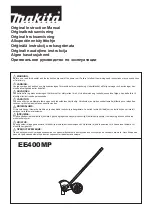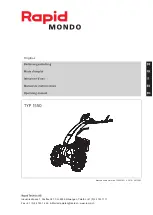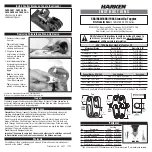
Patch-Clamp Setup
EPC9 Manual
68
well-grounded setup, the microscope can provide most of the shielding. Make sure
there is electrical continuity between the various parts of the microscope, especially
between the microscope frame and the stage and condenser, which are usually the
large parts nearest the pipette. Electrically floating surfaces can act as “antennas”,
picking up line-frequency signals and coupling them to the pipette. Make sure the
lamp housing is also grounded. It is usually not necessary to supply DC power to the
lamp, provided that the cable to the lamp is shielded and that this shield is grounded
at the microscope.
External Shielding
Especially when an unshielded pipette holder is used, some electrostatic shielding of
the experimental setup is necessary to avoid line-frequency pickup from lights and
power lines in the room. Most experimenters use a table-top Faraday cage with a
closable front, and lead all of the cables (e.g., from the microscope lamp, probe,
cooling system, ground lines) through a hole in the cage to an equipment rack
mounted outside. If the pipette holder is somewhat exposed, or if the Faraday cage
has an open front, a small grounded screen placed near the pipette holder may help.
Connections to other Instruments
Depending on the needs of the particular user, the EPC9 software can substitute (to a
great extent) for many analog instruments (e.g., variable filter, oscilloscope, pulse
generator, data storage). However, for test purposes, it is still a good idea to have an
oscilloscope connected to the EPC9. You may connect a PCM/VCR combination or
DAT tape recorder to
Current Monitor 1
, in order to record single-channel activity
continuously at high bandwidth. Also, it is often convenient to observe the voltage
and current monitor signals at the recorder's outputs, rather than directly from the
patch clamp. In most data recorders, the input signals are passed through to the
outputs, and observing the signals there can increase the experimenter's confidence
that the data are being recorded correctly.
Pipette Holder and Electrode
A shielded version of the pipette holder is available; this holder and a properly
grounded microscope can provide sufficient shielding from 50-60 Hz interference
even without the use of a Faraday cage. The shielded holder, however, introduces
much more random noise than the unshielded one. This random noise arises from
the non-ideal dielectric properties of the plastic in the holder and from thermal
voltage fluctuations in films of aqueous solutions; the metal shield allows more of
this noise to be coupled capacitively into the amplifier input. For single-channel
















































